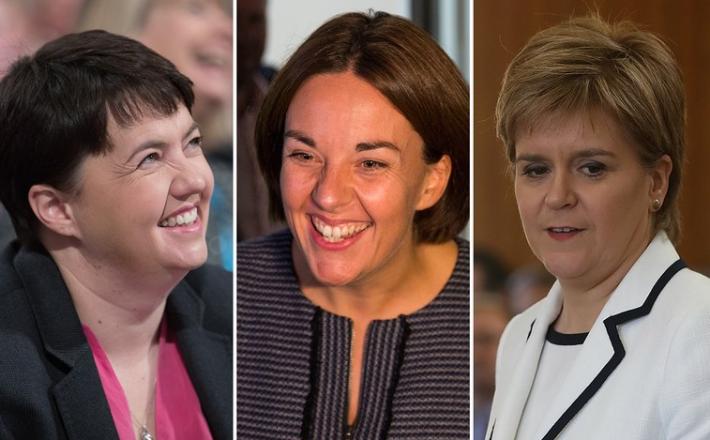Scotland's 3 major political leaders are women
Scotland may be tiny, but the ambitions of its female leaders certainly are not. Teen Vogue spoke to the three parties ahead of the June 8 election in the United Kingdom to find out about female representation in Scotland, and what’s been done to bring gender parity so far.
Nicola Sturgeon is the first minister and leader of the SNP. She told Teen Vogue that her focus is “taking action to support more girls to take up STEM subjects; helping more women back into work by increasing free child care; legislating so all public boards will have 50-50 gender balance; and encouraging the private sector to do the same.” Sturgeon introduced a gender-balanced cabinet as soon as she became leader.
When Sturgeon first met Prime Minister May, she thought to herself, "Regardless of our political differences, the image — of a female first minister of Scotland meeting with a female prime minister of the U.K. — was quite a powerful one for other women, and especially for young girls," she says. “I want to send a strong message to all girls and young women in Scotland and across the world — if you work hard, the sky is the limit.”
Sturgeon’s rivals are Kezia Dugdale and Ruth Davidson, of the Labour and Conservative parties, respectively. Despite the hugely differing stances of their parties, they have a comparable number of seats in parliament (29 for the Conservatives; 23 for Labour), and in local elections held May 5, Conservatives made major advancements.
Annie Wells, equality spokesperson for Ruth Davidson and the Conservative party, told Teen Vogue that three female leaders in Scotland means “a positive image has been created, which in turn encourages more women into politics.” The Conservatives recently launched the Women2Win campaign at their recent party conference to address female representation within their party, and the Labour party has also started a number of initiatives including mentoring sessions for girls.
While Scotland has still not hit its 50 percent parliamentary gender balance just yet, and there are clearly divisions between the parties over how to accomplish gender equality, the upcoming election will show Scotland’s young women that the option of politics is available to them if they choose. Seeing a major governmental race made up of only women leaders is exciting — and although the three party leaders may be rivals in the election, they are joined together in helping to further the cause for Scottish women in politics.
Click here to read the full article published by Teen Vogue on 5 May 2017.

Scotland may be tiny, but the ambitions of its female leaders certainly are not. Teen Vogue spoke to the three parties ahead of the June 8 election in the United Kingdom to find out about female representation in Scotland, and what’s been done to bring gender parity so far.
Nicola Sturgeon is the first minister and leader of the SNP. She told Teen Vogue that her focus is “taking action to support more girls to take up STEM subjects; helping more women back into work by increasing free child care; legislating so all public boards will have 50-50 gender balance; and encouraging the private sector to do the same.” Sturgeon introduced a gender-balanced cabinet as soon as she became leader.
When Sturgeon first met Prime Minister May, she thought to herself, "Regardless of our political differences, the image — of a female first minister of Scotland meeting with a female prime minister of the U.K. — was quite a powerful one for other women, and especially for young girls," she says. “I want to send a strong message to all girls and young women in Scotland and across the world — if you work hard, the sky is the limit.”
Sturgeon’s rivals are Kezia Dugdale and Ruth Davidson, of the Labour and Conservative parties, respectively. Despite the hugely differing stances of their parties, they have a comparable number of seats in parliament (29 for the Conservatives; 23 for Labour), and in local elections held May 5, Conservatives made major advancements.
Annie Wells, equality spokesperson for Ruth Davidson and the Conservative party, told Teen Vogue that three female leaders in Scotland means “a positive image has been created, which in turn encourages more women into politics.” The Conservatives recently launched the Women2Win campaign at their recent party conference to address female representation within their party, and the Labour party has also started a number of initiatives including mentoring sessions for girls.
While Scotland has still not hit its 50 percent parliamentary gender balance just yet, and there are clearly divisions between the parties over how to accomplish gender equality, the upcoming election will show Scotland’s young women that the option of politics is available to them if they choose. Seeing a major governmental race made up of only women leaders is exciting — and although the three party leaders may be rivals in the election, they are joined together in helping to further the cause for Scottish women in politics.
Click here to read the full article published by Teen Vogue on 5 May 2017.